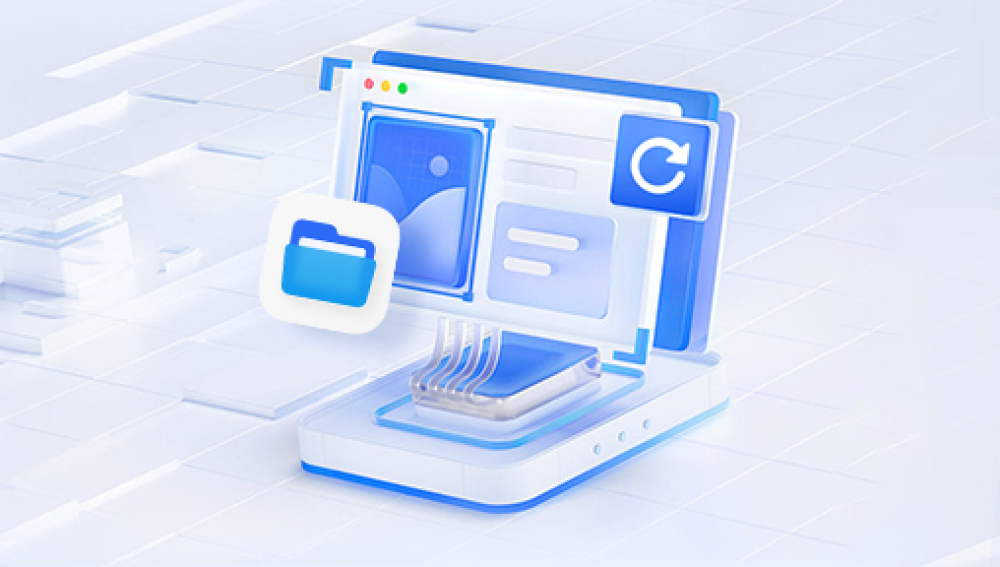Permanently deleting a file from your computer can feel like an irreversible mistake. Perhaps you accidentally emptied your Recycle Bin or used a keyboard shortcut that wiped out an important folder. Regardless of how it happened, many users assume that “permanent” deletion means total loss. Fortunately, that’s not always the case.
Files that are “permanently deleted” (meaning deleted using Shift + Delete, emptied from the Recycle Bin, or removed via terminal commands) are not immediately erased from your hard drive. Instead, the space they occupy is marked as available for new data. Until that space is overwritten, recovery is often possible. Whether you're using a Windows PC or a Mac, you have multiple recovery options from built-in OS features to specialized software like Drecov Data Recovery.

Chapter 1: Permanent Deletion
1.1 What Does “Permanently Deleted” Mean?
Files deleted from the Recycle Bin or Trash are labeled “permanently deleted.”
Files removed using Shift + Delete (Windows) or Command + Delete + Empty Trash (Mac) bypass temporary storage folders.
Files deleted via Command Line or through system utilities are also removed permanently.
These files are not immediately erased from the hard drive—they remain hidden until new data overwrites them.
1.2 Factors Affecting Recovery
Time since deletion: The sooner you attempt recovery, the better.
Storage usage: Avoid writing new data to the drive.
File type and size: Some formats (e.g., large video files) are harder to recover intact.
File system: NTFS, FAT32. APFS, and HFS+ impact recovery capabilities.
Chapter 2: Initial Steps After Data Loss
2.1 Stop Using the Drive
Immediately stop saving or installing anything on the drive where the file was deleted. This prevents overwriting the space the deleted file occupies.
2.2 Check Other Folders
Before diving into recovery, make sure you’ve checked:
Recycle Bin or Trash
OneDrive, Google Drive, or other synced cloud folders
Temporary folders (Windows: %TEMP%, Mac: /private/var/folders/)
Chapter 3: Restore Previous Versions (Windows)
Windows has a feature called File History that lets you restore previous versions of files or folders.
3.1 Steps to Use File History
Open File Explorer.
Navigate to the folder where the file was located.
Right-click inside the folder and select Properties.
Go to the Previous Versions tab.
Select a version and click Restore.
3.2 File History Requirements
Must be enabled before file loss.
Requires an external or secondary backup drive.
Chapter 4: Use Backup and Restore (Windows 7 and Up)
If you configured Windows Backup, use it to restore lost files.
4.1 Steps to Restore
Open Control Panel > System and Security > Backup and Restore (Windows 7).
Click Restore my files.
Browse or search for deleted files.
Select and restore them.
Chapter 5: Use Time Machine (macOS)
Mac users can recover deleted files using Time Machine if it was enabled before data loss.
5.1 How to Use Time Machine
Open the folder where the deleted file existed.
Click the Time Machine icon in the menu bar and choose Enter Time Machine.
Navigate through the timeline to locate the deleted file.
Select it and click Restore.
Chapter 6: Recovery from Cloud Storage
If your files were backed up or synced to cloud platforms, you might be able to restore them easily.
6.1 OneDrive
Go to onedrive.live.com.
Open the Recycle Bin.
Locate your file and click Restore.
6.2 Google Drive
Go to drive.google.com.
Open the Trash.
Right-click your file and select Restore.
6.3 Dropbox
Log in to Dropbox and go to the folder where the file was deleted.
Click Deleted files in the sidebar.
Select the file and click Restore.
Chapter 7: Use Third-Party Recovery Software
When all else fails, data recovery software can help retrieve permanently deleted files from your hard drive.
7.1 Top Recovery Tools
Drecov Data Recovery
Drecov Data Recovery is designed to locate and restore files that traditional operating systems consider “gone forever.” When a file is deleted permanently, it’s not immediately erased from your hard drive; instead, its space is marked as available for new data. Until that space is overwritten, the file remains recoverable and that’s where Drecov Data Recovery excels.
Using an intuitive interface, Drecov Data Recovery scans your hard drive for traces of deleted data. It supports recovery for documents, photos, videos, emails, and more, across formats like NTFS, FAT32. exFAT, and others. With both Quick and Deep Scan modes, users can choose between fast results or a more thorough, sector-by-sector examination of their drive.
Chapter 8: Using Drecov Data Recovery (Step-by-Step)
Drecov Data Recovery is a user-friendly and effective solution for recovering permanently deleted files from various storage media.
8.1 Features
Supports NTFS, FAT32. exFAT, APFS
Deep scan and file preview
Recovers documents, images, videos, and more
8.2 How to Use It
Download and install Drecov Data Recovery (avoid installing on the drive with lost files).
Launch the software and choose the affected drive.
Select Deep Scan for more thorough results.
Wait for the scan to complete.
Use filters to find specific file types (e.g., .docx, .jpg, .xlsx).
Preview the files and select the ones you wish to recover.
Choose a new location (not the same drive) to save the recovered files.
Permanently deleted files are not always lost forever. As long as the storage sectors they occupied haven’t been overwritten, they can be recovered using built-in tools, cloud backups, or third-party software like Drecov Data Recovery. Acting quickly and following the proper steps is critical to successful recovery.
Going forward, create backups, enable versioning, and avoid destructive deletion methods. With proactive planning and the right tools, you can protect your data and recover from most accidental losses.




